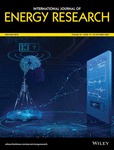Numerical simulation of heat-pipe and folded reformers for efficient hydrogen production through methane autothermal reforming
Funding information: Chongqing technology innovation and application demonstration project, Grant/Award Number: CSTC2018JSZX-CYZDX0100; scientific research project of education bureau of Hunan province, Grant/Award Number: 19C0688
Summary
In order to intensify the methane autothermal reforming (ATR) process for efficient hydrogen production, novel heat-pipe and the folded reactors were designed and studied by numerical simulations. The reactor performance, such as methane conversion rate, hydrogen yield, and temperature difference between the reactor inlet and outlet, was computed and compared for both traditional tubular reactors and the novel reactors. Under the optimum operating parameters, compared with the tubular reactor, the heat pipe reactor and the folded reactor can help to increase methane conversion rate from 34% to 45% and 50%, while hydrogen productivity from 22.2% to 28.6% and 31.4%, respectively. The performance of the heat pipe reactor depends on the length and position of the heat pipe, while for the folded reactor, thicker intermediate plate with higher thermal conductivity material is more beneficial. Results were compared with previous experiments and could be used as a reference to guide new experimental and theoretical works toward the ultimate goal of designing and optimizing the ATR reactors for hydrogen production in the future.




